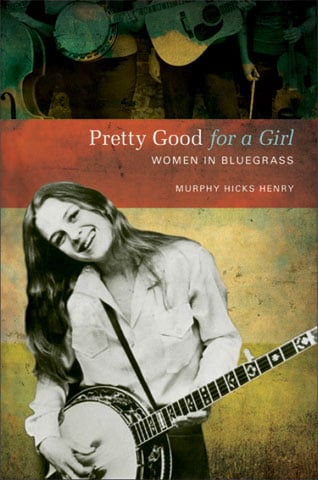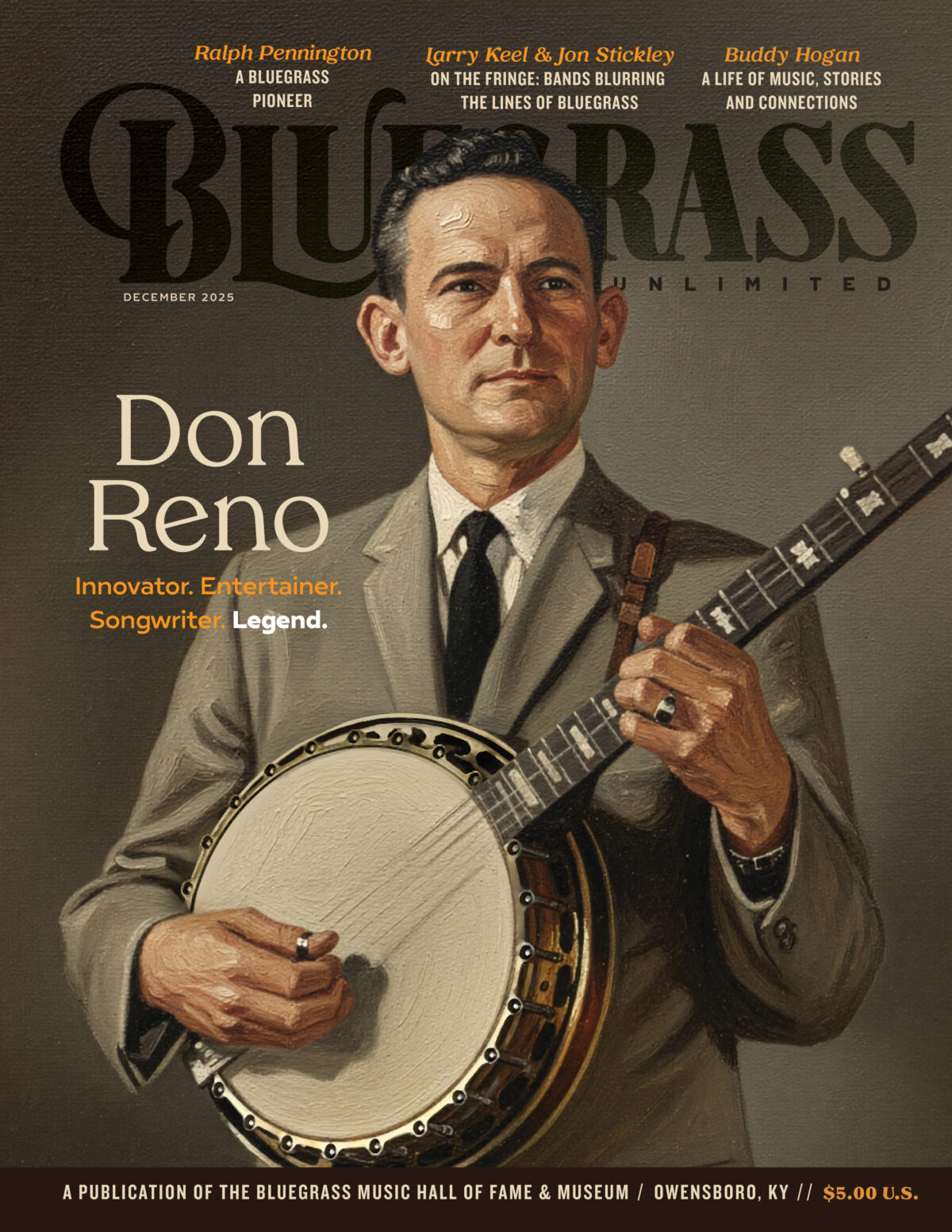PRETTY GOOD FOR A GIRL: WOMEN IN BLUEGRASS
 PRETTY GOOD FOR A GIRL: WOMEN IN BLUEGRASS
PRETTY GOOD FOR A GIRL: WOMEN IN BLUEGRASS
BY MURPHY HICKS HENRY
University of Illinois Press 9780252079177. Paperback, 469 pp., 66 b&w photos, $29.95. (Univ. Of Illinois Press, 1325 S. Oak St., MC-566, Champaign, IL 61820, press.uillinois.edu.)
Let us now praise famous women and those who should be. Readers of this magazine are well familiar with the writing, teaching, and performing of Murphy Henry. She has built a career that deserves a book of its own. With this, her magnum opus, Henry has made a contribution to bluegrass that cannot easily be repaid—except, I hope, with massive sales.
This work is one of the most timely, informative, and well-written books ever published on bluegrass and women’s roles in twentieth century American entertainment. I can’t emphasize enough just how deftly she spans the scope and subtleties of her subject, which rightly for this book is limited to women performers in bluegrass. (Another 500-page book could be written on the roles of women off-stage in bluegrass, such as that of Louise Scruggs, and Henry recognizes that in her Introduction.)
Because it is published by the University of Illinois Press, I was concerned that her scholarly self would stifle her natural southern eloquence, but I needn’t have worried. Henry is a master storyteller and builds her case for the early and important influence of women in bluegrass entertainingly and convincingly.
Starting with Sally Ann Forrester—if you thought she was just Monroe’s accordian player and Howdy Forrester’s wife, then you need to read this chapter—she tells the stories, the struggles, and successes, of women performers in bluegrass. So much of that history is oral, and Henry, where possible, has either gone directly to the source or to those who knew the women personally.
There are chapters on women with whom you may already be familiar: Bessie Lee Mauldin, Alison Krauss, Hazel & Alice, the Lewis Family, the Stonemans, Rhonda Vincent, Claire Lynch, Laurie Lewis. But there are names you may hear for the first time, but who were important either during their time or who provided inspiration for the next generation: Vallie Cain, Bettie Buckland, Rubye Davis, Wendy Thatcher, Beck Gentry, and many others.
The book is arranged chronologically, but with a different chapter on each performer, you can easily dip in and out, which is the way I read it, being drawn first to names I had never heard before. It’s a big book, but one that holds your interest no matter where you start reading.
What all these women have in common is not only talent and dedication, but, given what they had to overcome, an almost inexplicable sense of humor and appreciation for life and music. Murphy Hicks Henry herself could have gotten her own chapter, but such discipline and self-effacement in a writer can only be applauded.
That the last chapter is titled “Too Many To Count” is telling. A book like this probably won’t (and can’t) be written again, and I think Murphy would see that as a good thing. Though there is still a ways to go, the influence and importance of women in bluegrass is well established. This academically solid and emotionally moving work shows the price that was paid by so many women in creating not only their own place in bluegrass, but in shaping and taking the music to new venues and wider audiences. This work should be a highlight on any list of required books for many years to come, and should be read by everyone in bluegrass—women and men.CVS
